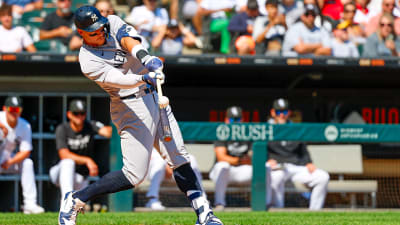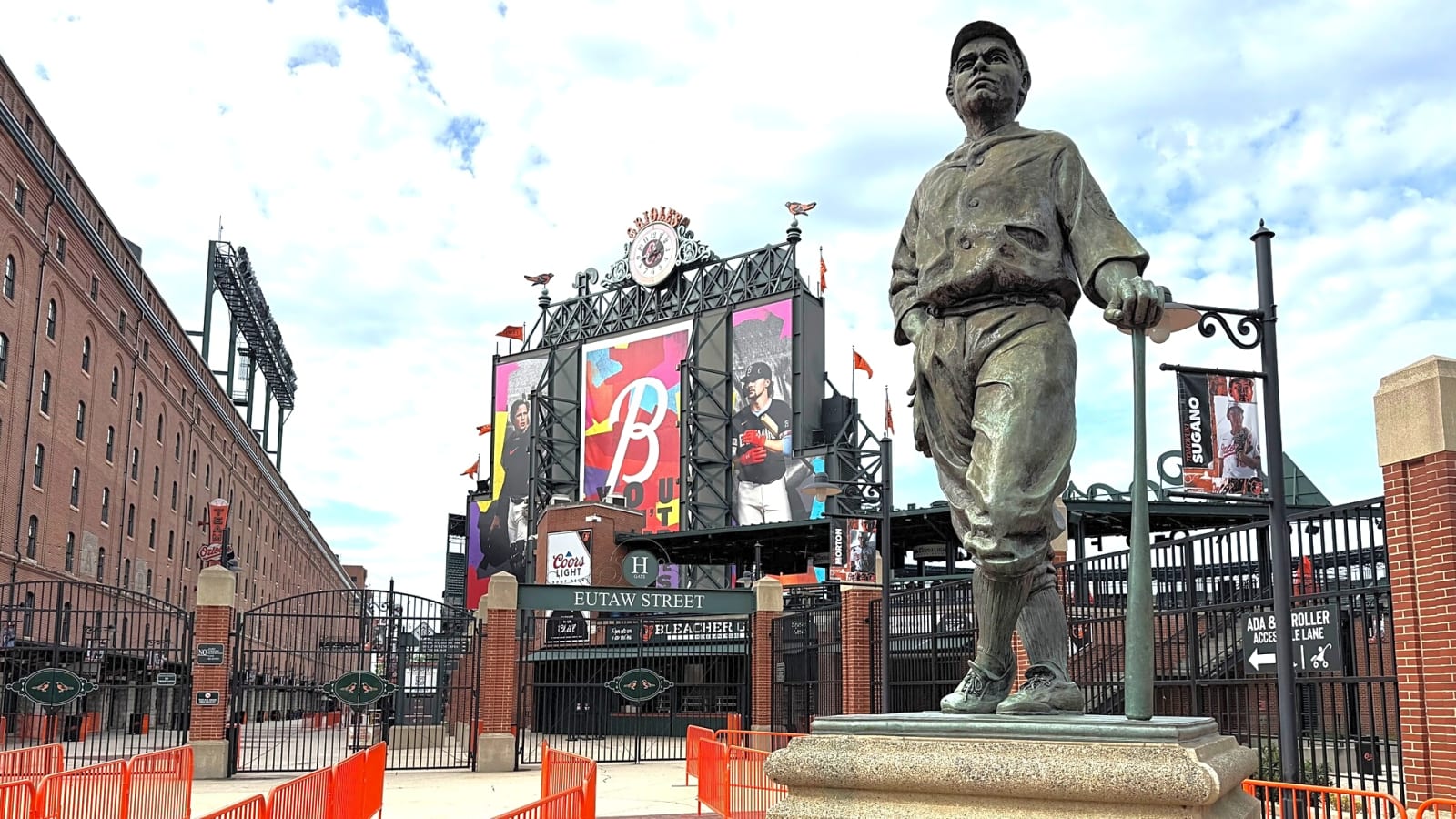
'We can't get enough': How Baltimore, Babe Ruth remain forever intertwined
BALTIMORE — Babe Ruth played for the Boston Red Sox and New York Yankees, the Orioles' biggest rivals, but there's no question that Charm City is still the kingdom of "The Sultan Of Swat."
More than 75 years after his death, baseball fans are still enamored with Ruth, one of five original inductees into the National Baseball Hall of Fame and subject of iconic stories such as "The Called Shot" at Chicago's Wrigley Field in Game 3 of the 1932 World Series. It is those stories, along with the statistics that he put up during his 22-year career, that draw people to learn more about him in Baltimore, where Ruth was born on Feb. 6, 1895.
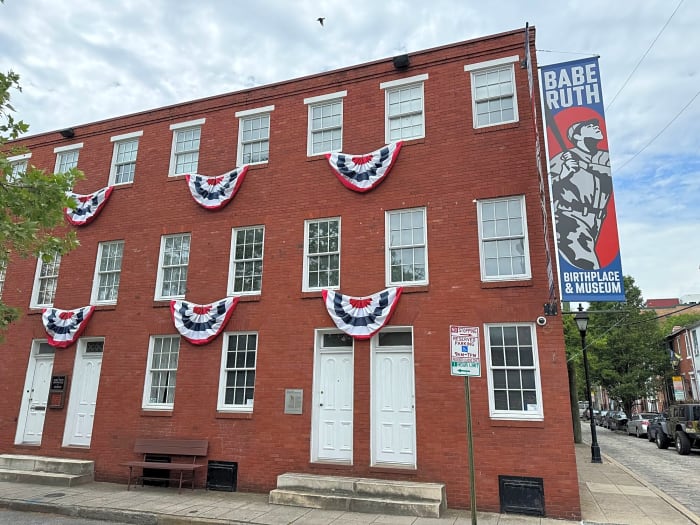
“We can’t get enough of the Babe,” said Mike Fortino, a volunteer at the Babe Ruth Birthplace And Museum, a few blocks from home plate at Camden Yards, the Orioles' home stadium since 1992. “He’s one of those iconic figures in baseball and in our society who was truly larger than life.”
No MLB player has a higher career slugging percentage (.690), OPS (1.164) or OPS+ (206) than the Babe. His offensive WAR (Wins Above Replacement) of 154.5 surpasses all players from generation (Ted Williams with 125.1) to generation (Barry Bonds with 143.6).
Simply put, there has never been, and may never be, another ballplayer like Ruth.
Baltimore revels in its native son. Walk near Camden Yards and you’re reminded of what Ruth means to the city. Whether it’s a statue or a plaque outside of Camden Yards honoring the Babe or the spray-painted baseballs on the sidewalk that guide visitors to the legend's birthplace on Emory Street, "The Sultan of Swat" is top of mind.
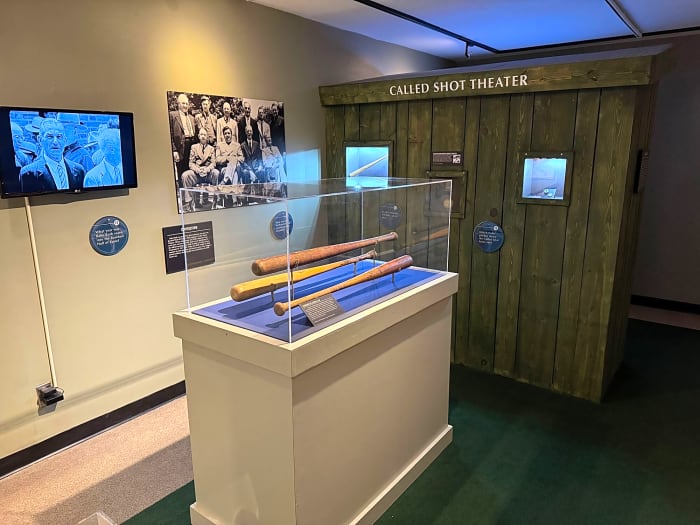
The Ruth museum holds several eye-catching artifacts from the Babe’s glory days, including home run balls he sent flying and one of the bats he used to hit them with.
“You can’t tell the story of the Babe without this place,” Fortino said, standing on the first floor of a two-story, brick building with patriotic bunting on the outside. That's fitting for the house that serves as the starting point of Ruth’s story as an American icon.
At the museum, visitors can tour the upstairs bedroom where Ruth was born. They also can listen to and read the stories of the path that connects George Herman Ruth as a baby and child to the man who would eventually become "The Bambino."
As a 7-year-old, after a series of troubling incidents, Ruth was enrolled in Saint Mary’s Industrial School For Boys, a place a sign outside Camden Yards notes was “a home for unwanted children in southwest Baltimore.”
It was at St. Mary's that Ruth learned to work well with a needle (he often altered his own uniforms, supposedly with the skill of a tailor) and began to learn to play baseball on the school’s fields that are still used today for recreational league games. According to a story by Chip Martin for the Society for American Baseball Research, Ruth credited St. Mary's Martin Leo Boutilier, also known as Brother Matthias, for not only helping him learn baseball but also becoming the father figure he craved.
Ruth grew up in Baltimore, learned how to play baseball in Baltimore and, in 1914, signed his first professional contract with the minor league Orioles. A little more than two years later, he was sold to the Red Sox. With that contract, the legend of "The Bambino" truly began.
Walk into the Babe’s birthplace today and you’ll see countless mementos of not only his early life but of his professional career. Visitors will also hear stories about the places in Baltimore forever tied to "The Sultan of Swat."
Behind second base at Camden Yards is the location of the saloon the Ruth family owned and lived in in the 1890s. The place celebrated as his birthplace was actually his grandparents' house, a few blocks from the bar.
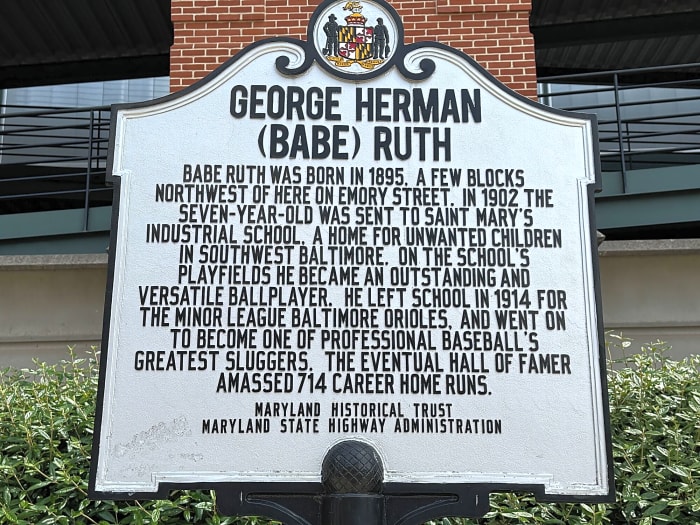
The Babe Ruth Birthplace And Museum also holds, among other memorabilia, a 1914 Baltimore News Ruth rookie card featuring Babe as a 19-year-old with the Orioles. A similar card sold recently at auction for $7.2M.
Past auctions of Ruth memorabilia have benefitted the museum, helping with renovations that include a permanent archive for its “thousands of objects, photos and archival material,” according to its website. Those artifacts will keep not only the museum changing and growing, but also help to feed the continuous desire baseball fans have for all things Babe Ruth.
“I love to tell people about the Babe,” Fortino said with a smile. “There’s always something to learn about him and all of the different ways that he changed the game of baseball.”
All quotes original unless otherwise noted.
More must-reads:
- Winners and losers through MLB's first six weeks
- Yankees should be wary of Trent Grisham’s success
- The 'First Baseball Hall of Fame induction ceremony' quiz
Breaking News
Trending News
Customize Your Newsletter
 +
+
Get the latest news and rumors, customized to your favorite sports and teams. Emailed daily. Always free!

